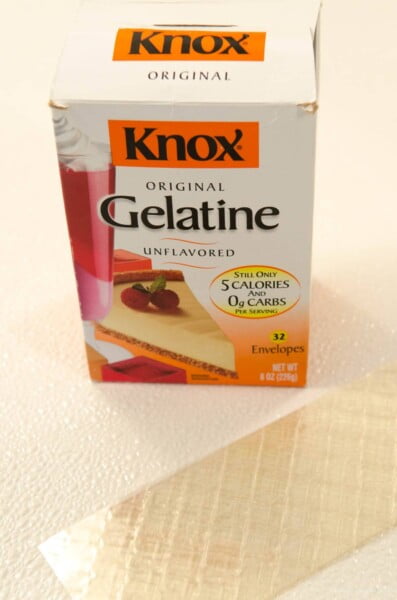
Gelatin is one of the most important setting agents in pastry. An odorless, tasteless and colorless thickening agent that forms a gel when ultimately combined with a liquid, it is also one of the most misunderstood ingredients in pastry. It forms a crystal clear gel that melts quickly and cleanly when eaten
Use too little and the product won't set, use too much and you can bounce it across the room. Finding just the right balance so the item won't sag when released from its mold can be tricky. When done right, it adds body that goes unnoticed.
Aspic is perhaps the most extreme use of gelatin. Some recipes for pate de fruit and Turkish Delight also use gelatin in an extreme form. But for most desserts you definitely don't want to know it has been set with gelatin. Gelatin has many uses in pastry including Bavarian Cream, mousses, and cold soufflés as well as in homemade ice cream to prevent it from becoming too hard in the freezer. I use it in pastry cream and lemon curd so they maintain their shape when piped and left at room temperature.
History of Gelatin
The earliest finding of gelatin used in cooking goes back to early Egypt and it has been found in early Rome where it was used as glue. The first recipes using gelatin were in the 1400's and they were savory. Sweetened gelatin didn't appear until the end of the medieval period.
The first aspics began to appear on refined European tables in the late 18th century. These were clear, savory jellies, served as molded showpiece dishes containing whole or sliced ingredients. The most famous 19th-century French chef, Antonin Carême, was a huge fan of aspic, which he placed in the category he called chaud froid (French for “hot cold”—dishes that were first cooked, then served cool). Carême’s meals often featured elaborate architectural tableaux constructed from chaud froid, with many of the elements glazed with—or encased in—glistening aspic.
From Joe Pastry comes this on the history of gelatin."Pastry Chef Ed writes:
Another thought on the historical significance of gelatin over starch. Gelatin was once a sign of wealth, before the advent of prepared gelatin, only members of the elite classes could afford it. It took hours to render gelatin from bones, skin, etc. clarify it, and turn it into fancy aspics, molded salads, desserts. etc. The use of gelatin was a sign that the host or hostess had the means to support a kitchen staff with the skill and time to create such a dish. When gelatin became available commercially it still was a symbol of culinary sophistication.
It wasn’t until the 20th century that took gelatin from the dining room of the wealthy to the Jello salads found at PTA pot lucks and family back yard picnics. A glance through the cookbooks of the gilded age show hundreds of salads, fish courses, aspics, jellies, and Bavarian creams, plus as many different elaborate molds in which to shape them.
What I do know is that bone and skin-derived jellies like aspics have been around for millennia, though they really came into vogue in the Renaissance. By 1700 or so, gelatin was being produced on an industrial scale (it was the Industrial Revolution, after all) though it wasn’t always favored in the pastry kitchen because it was relatively unrefined and could make delicate creams taste like meat.
About 1890, a fellow by the name of Charles Knox of Jamestown, New York was watching his wife tediously prepare an aspic of calve’s feet and thought to himself: there has to be a better way. His refined and flavorless powdered product hit the market just a few years later, and the rest is kitchen history."
How Gelatin is Made
Today most gelatin is made from washed and cleaned pigskin. However, it can also be made from beef bones and beef hide and isinglass is a gelatin derived from fish.
Soaking the chopped clean pigskins in an acid treatment breaks down the pigskin's connective tissue transforming its protein fibers called collagen into smaller invisible strands of gelatin that thicken when cooled. Hot water is used to extract the gelatin from the pigskins. This extraction is repeated up to six times with the temperature of the water increasing with each extraction. Boiling water is used for the last extraction.
The best quality gelatin is from the first extraction. It has the strongest gel, the clearest, lightest color, and the mildest flavor. It also solidifies the fastest. Each of the extractions is filtered to purify it, concentrated and then formed into sheets, dried and ground.
Ground gelatins from different extractions are combined to standardize the gelatin from batch to batch. To obtain sheet or leaf gelatin the gelatin is dissolved again, reheated, cast, cooled and dried as sheet or leaf gelatin.
Oscar T. Bloom invented of the Bloom gelometer. The machine is used for testing the Jelly strength of glues, gelatines, and the like. It measures the gel strength of gelatin, reflecting the average molecular weight of its constituents. The higher the Bloom number the stiffer the gelatin and, in general, the more expensive it will be. It was patented on June 9, 1925.
This bloom should not be confused with the much-used word "bloom" when rehydrating gelatin.
Types of Gelatin
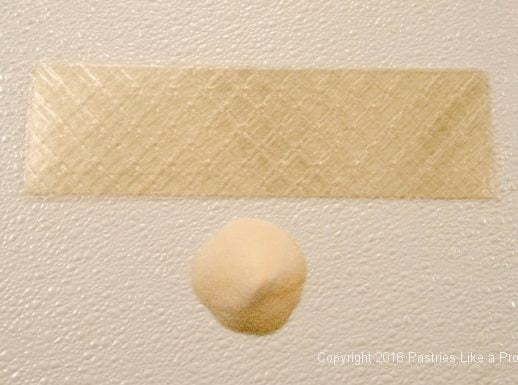
In pastry kitchens today there are two types of gelatin used – powdered or sheet. The most popular among pastry chefs is the sheet or leaf gelatin. Gelatin is rated by its strength also known as a Bloom rating. Powdered gelatin is rated at 230 which is what we used in my bakery.
Sheet gelatin is rated by precious metal names with platinum being the highest rated at 223-265. Gold is190-220, Silver at 160 and Bronze is 125-135. Many recipes call for a certain number of gelatin sheets. To keep from having to recalculate the different gelatin sheets, the lower the number of the sheet, the thicker the sheet. So if a recipe calls for 10 sheets of gelatin, 10 sheets of any color can be used.
Jacob Burton of Stella Culinary has this to say about it: "To compensate for the fact that one sheet has a higher bloom strength than another; each grade of gelatin is weighted differently, making their overall ability to set a gel, more or less equal. For example: Bronze: 3.3g, Silver 2.5g, Gold: 2.0g, Platinum: 1.7g.
So this leads to the natural question of...if their gelling powers are pretty much the same, then why are their different grades of sheets in the first place?
And what is the answer? I have no idea. In fact, I’ve been pulling my hair out trying to figure this whole thing out, and the only thing I can think of is to make volumetric recipes easier to standardize, meaning once you get used to a particular sheet, you stick to it, and you know that x amount of sheets per cup of liquid is what you prefer for a particular result."
I'm with him – I have no idea.
How to Use Gelatin
Knox gelatin sold in grocery stores is powdered and easily available to the home cook. Each envelope contains 2 ½ teaspoons, enough to jell 2 cups of liquid or 1 ½ cups of solids. However, the amount of gelatin could be altered depending upon the amount of gel desired and the viscosity of the mixture to which it is being added.
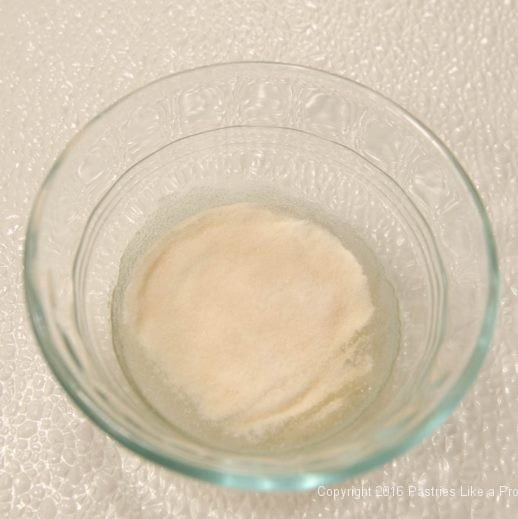
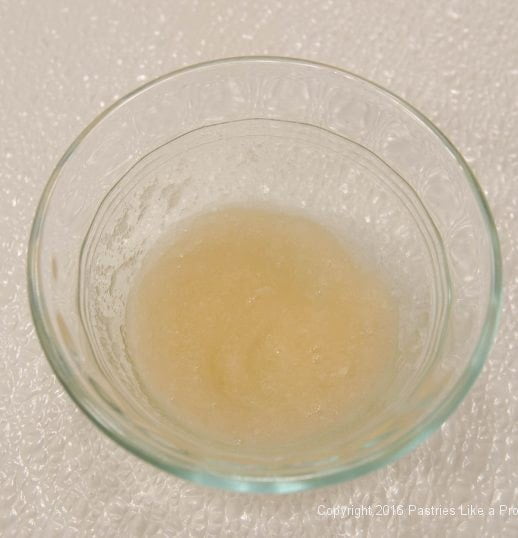
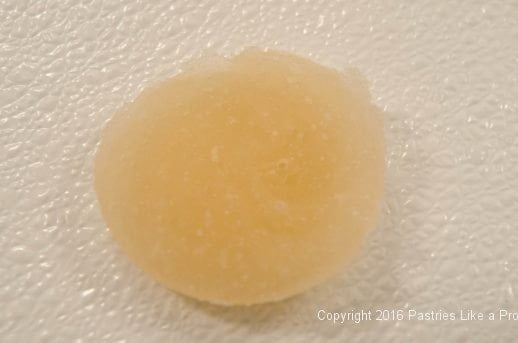
Whatever type of gelatin is used it must first be rehydrated in water. This is often referred to as bloom. Powdered gelatin is sprinkled over the specified amount of liquid. Stir the gelatin into the water to make sure all of the granules are wet all the way through. It is then torn into small pieces and added directly to a hot mixture or, if using in a cold mixture, heated to liquefy it before adding it.

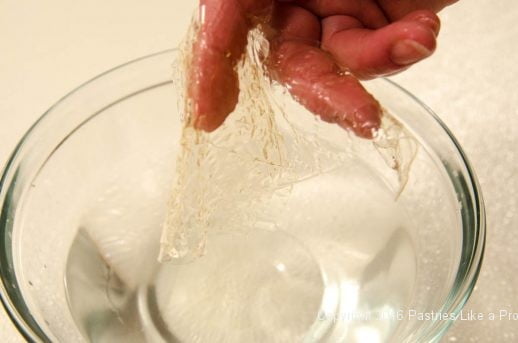

Sheet or leaf gelatin must also be softened in cold water. The sheets are then squeezed to remove excess water before being added directly to a hot mixture. If the gelatin is to be added to a cold mixture, it must be heated to dissolve it first.The amount of sheet gelatin to substitute for powdered is variable depending on who you are reading. I have seen anything from 3,4 or 5 sheets per ¼ ounce package of powdered gelatin. Paula Figoni who wrote, "How Baking Works," says 30 gelatin sheets equals 1 ounce. So according to that 7.5 sheets would equal one ¼ ounce package of powdered gelatin, which seems exorbitant.
David Lebovitz has this to say on the subject: "Substituting sheet gelatin for powdered gelatin is perhaps the most controversial ratio known to the baking world. I’ve seen everything from 1 envelope equals 3, up to 5 sheets. Three-and-a-half sheets seem to work best for me. I use sheets that are 3-inches by 5-inches."
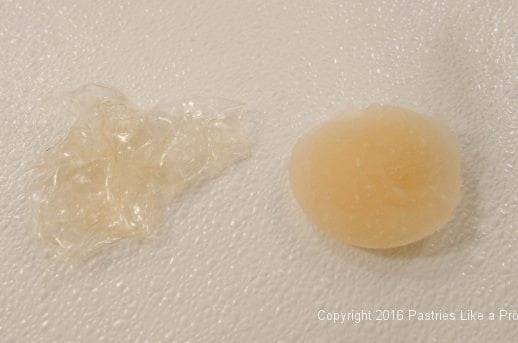
While many pastry chefs justify their use of sheet gelatin as being fewer steps, I can't see why. Both have to go into liquid to rehrydrate and then into the hot liquid. If going into a cold liquid both have to be heated to liquefy them first. If they are referring to having to measure the powdered liquid, they still have to count the sheets. It seems to be a moot point to me.
Inhibitors
Certain ingredients will inhibit the setting of gelatin. Among these are salts, acids, prolonged heating, and an alcohol concentration above 40%. Protolytic enzymes found in fresh fruits including kiwi, papaya, pineapple, peach, mango guava and fig. Bringing any of these fresh fruits to a simmer will destroy the enzyme making it possible for the gelatin to set.
Information for this blog was, in part, from the following:
https://whatscookingamerica.net/History/Jell-0
history.htmhttps://non www.history.com/news/hungry-history/jiggle-it-the-history-of-gelatins-aspics-and-jellies
https://non www.davidlebovitz.com/how-to-use-gelatin
"How Baking Works" 3rd Edition by Paula Figoni,


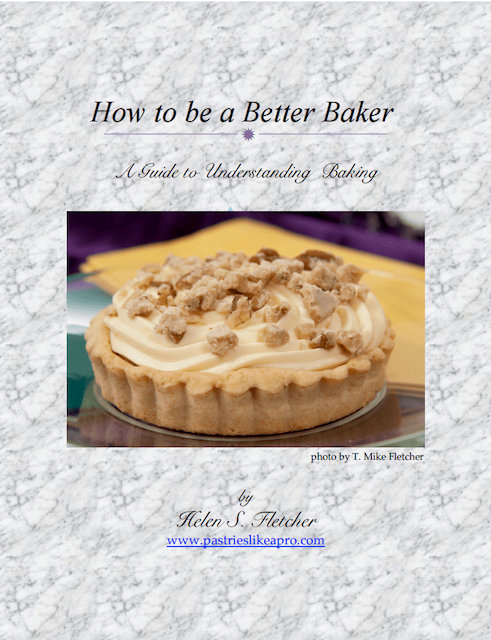

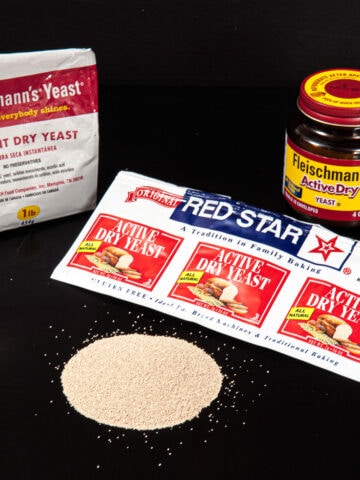
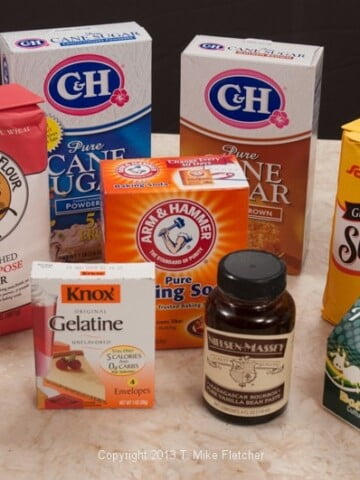
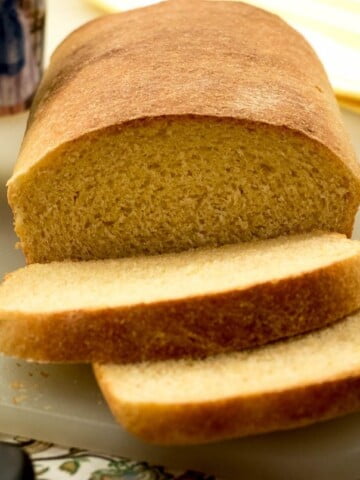
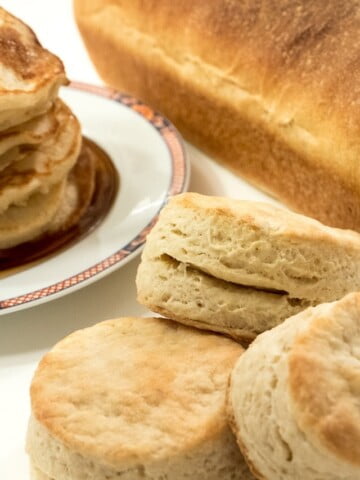
Karen McCreary says
Very interesting article . Isn't it amazing all the various new gadgets we have in our kitchens , that gelatin in its modern form has been around this long and we have yet had some guru figure out how to standardize this incredible substance ? !! <3
Sandy says
Hi Helen, I was so excited to hear you used gelatin in curds.....I make curds for filling for thumbprint butter cookies....and I pipe in the curd....but the curd does not hold up well at room temperature. ...my curd recipe makes 1 and half cups....how much gelatin do you suggest I use?and at what point do I add it?
Thank you Sandy
hfletcher says
Hi Sandy - Go to https://pastrieslikeapro.com/2016/04/lemon-blueberry-cake/#.WI_AeGVh2dE and you will find my lemon curd with the gelatin.
Sharon Baskin says
Hi Helen! I am having a hard time finding a chocolate brownie cookie that doesn't "sink" and collapse. I'm looking for a recipe that doesn't include chocolate chips folded into the batter. Can you help me?
hfletcher says
Hi Sharon - what about nuts? Can these be used. Often, a cookie that uses and ingredient that is omitted depends upon that ingredient to hold it up. My suggestion is to go on the internet and put in chocolate cookies without chocolate chips. Quite a few come up. Food Network has one that looks like the one you want.
Sharon Baskin says
Great suggestions thanks so much!
Pam says
Helen, thank-you for such an informative and well-written article about gelatin.
hfletcher says
Thank you Pam. I am a believer in the more you know about the ingredients, the easier it is to bake. I hope to be able to do more of these papers on different subjects this year.
mybobba1Mari says
So happy you posted this, you always em to answer questions we didn't know we wanted asked. I always wondered why gelatin is not kosher. Now I know. Jello is kosher but can't understand why when Knox is not.
hfletcher says
Hi Marilyn - I went on the internet and found that Rabbi's don't agree on whether Jello is kosher or not. One says is is not due to the fact that no matter how you alter it, pigskin is pigskin. Another says that because it is so altered that it is a new product. Sort of like how many sheets equals a package of gelatin. You get to figure it out.
hfletcher says
Hi again Marilyn: I am assuming you know that gelatin made from beef bones is kosher as is issinglass made from fish. Both can be found on the interenet.
eileen says
Helen, thank you for the information. I am not sure if I am any less confused but just yesterday I needed use a up a dozen egg yolks and made a huge batch of your pastry cream. Since I had both sheets and Knox I wondered if the sheets would be be a better choice. I used the Knox in the end since I was so unsure about how many sheets to use. Nice to know the industry is just as confused as I am! eileen
hfletcher says
I find it interesting that when working with pastry everything is so regulated but we can't even figure out how many sheets equals 2 1/2 teaspoons of the same thing in a different form.
Barry says
very interesting
hfletcher says
Thank you Barry.